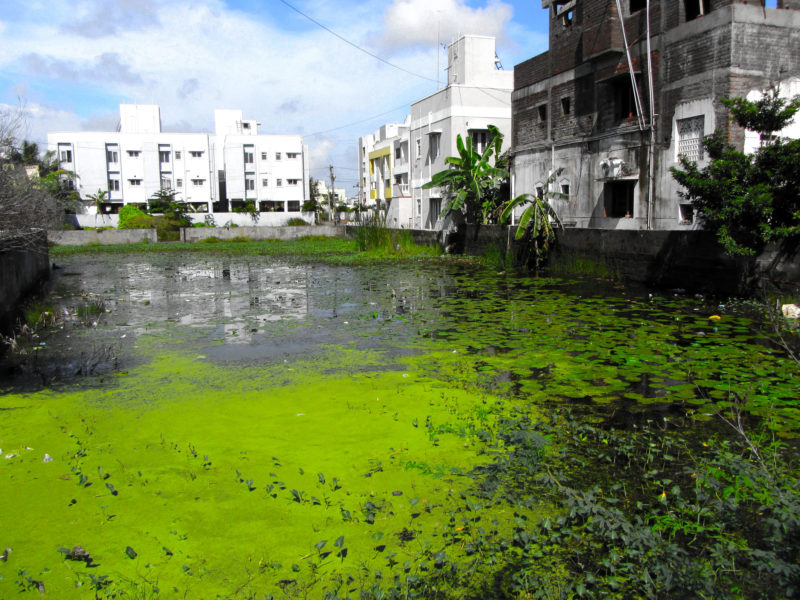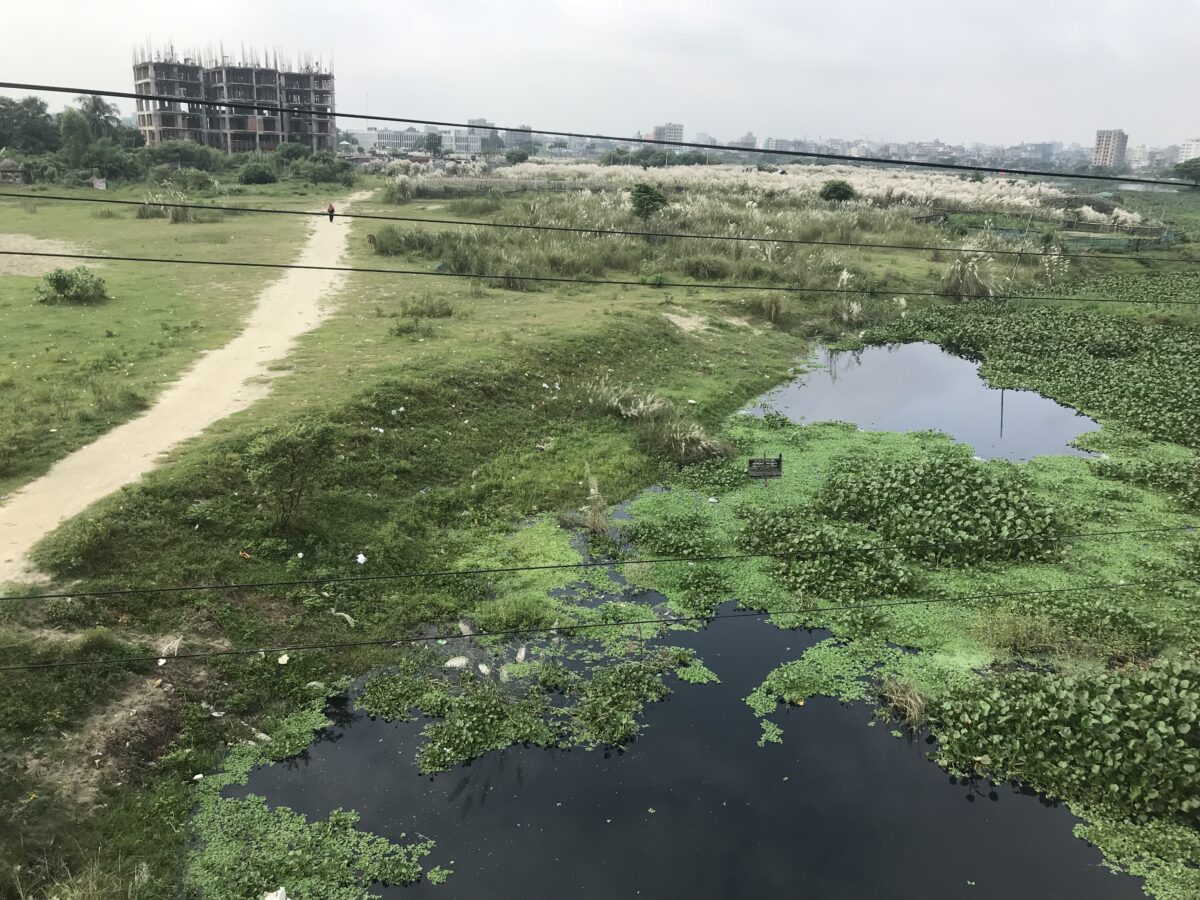The research for Monsoon Assemblages was undertaken in South and South East Asia, with a focus on four cities: Chennai, Delhi, Dhaka and Yangon. These cities were selected because the meteorological forces of the monsoon are qualitatively different in each of them and experienced and embedded in urban life in different ways. Chennai, Dhaka and Yangon were studied by the contracted MONASS research team while Chennai and Delhi were the focus of PhD study. As the project progressed, other places emerged as significant – Ladakh, Kanyakumari, Hpkant – and were incorporated into the project in different ways.
Chennai
Chennai, on the east coast of India, is the country’s third largest city with a current population of 9 million people. It is dependent on reservoirs fed by the northeast winter (Oct-Dec) monsoon and frequently faces water scarcity, ground water depletion and water conflicts. It is also vulnerable to cyclone and tsunami activity from the Bay of Bengal.

Marshland plot, Chennai. Photograph by Beth Cullen.
Delhi
Delhi, India’s capital city, with a current population of 21,7 million, lies inland on the Indo-Gangetic Plain where the southwest summer monsoon usually arrives at the end of June. It is vulnerable to ground water depletion and water shortages and has recently experienced extreme pre-monsoon heat and the late arrival of weak monsoon seasons.

The Delhi Ridge from Tughlaqabad Fort. Photograph by Harshavardhan Bhat.
Dhaka
Dhaka, the capital of Bangladesh, is currently a city of 14,5 million people located on the Buriganga River at the lower reaches of the Ganges delta. It is dependent on ground water replenished by rainfall brought by the south-west summer (June-Sept) monsoon and has experienced severe flooding, drainage congestion and heat stress three times over the past 20 years. It is also at risk from cyclones and storm surges.

Sand-filled ground, Madani Avenue, Dhaka. Photograph by Lindsay Bremner.
Yangon
Yangon lies at the southern tip of a laterite ridge that elevates it above the low-lying alluvial floodplains of the Ayeyarwady River delta. It is impacted by both the South Asian and the Southeast Asian monsoons, experiencing rainfall from May until October, when its low-lying districts are frequently flooded.

Pagoda in Yangon, Myanmar. Photograph by Lindsay Bremner.
